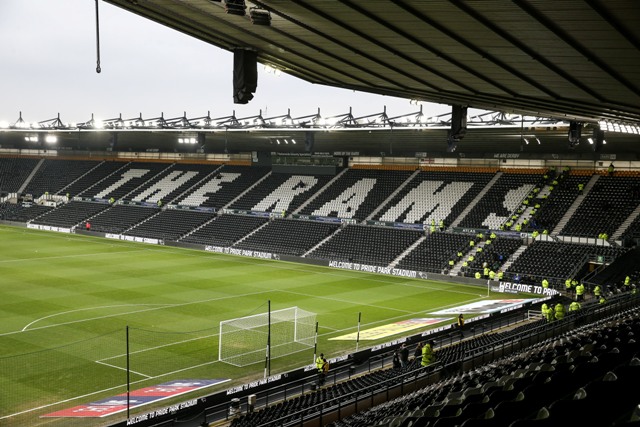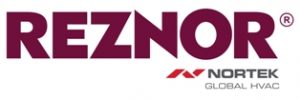Derby County’s Warm Welcome: The UK’s First Heated Concourse

When Mel Morris bought into Derby County Football Club in May 2014, he not only bought into the club but into the loyal fan base too. Being a lifelong Rams supporter himself he was conscious of the important contribution they make to the club.

Pride Park is home to 30,000 fans on match days and the importance of providing a warm and comfortable environment for spectators was paramount to Mr Morris, especially with more and more families attending games and the winter months being so cold. Installed in the South Stand, February 2016 and the North and West stands in July 2016, the heated concourses are thought to be the first in the UK and, pardon the pun, given a very warm welcome from fans with the club receiving very positive feedback both verbally and through social media by adding to the enjoyment of the match day experience.
Over the last few years numerous improvements have been made at the club with the most recent being the £1m stadium upgrade which includes a new PA system, a state of the art UEFA grade lighting system, a new £300,000 hybrid pitch with under soil heating and a new heating system in the concourses of the North, West and South stands, paid for by Mr Morris himself.
As Derby County spokesman Paul Tyrrell, explained: “We are continuously looking for ways to improve the level of service and quality of the match day experience for our supporters. Many enhancements have been made to Pride Park recently and our decision to introduce a new heating system in our concourses was a vital element of this upgrade programme.
“The heating system is one of the first to be introduced to stadia in the UK and are we delighted with it. Importantly, our supporters will feel the benefit of it for many seasons to come.”
Heat Transfer System To provide the ideal heating solution for Derby County, Reznor worked with local contractors Pegasus to develop a system that warmed the concourse that is open to the pitch, meaning the cold outside air would constantly infiltrate into the area.
The Reznor Nor-Ray-Vac installation was ideal as the system transfers energy by means of electromagnetic waves, hence passes through the air without heating it. This system heats surfaces rather than the air increasing its efficiency. Another major benefit to radiant heat is it’s able to create a warm environment without the additional stuffiness.
The Nor-Ray-Vac system was designed and implemented by Pegasus, and provides blanket heat coverage of the concourse, eliminating any cold spots and has an estimated potential fuel saving of 25% over an equivalent warm air system in this type of environment. As the concourse is situated underneath the stadium seats, the versatility of the system design meant the flue was able to be installed horizontally through the exterior walls. With the installation covering the
North, West and Family Stands, the total system installed comprised nine LR burners suspended at 6 metres high and two unitary Vision U Tube radiant heaters. The Family Stand and West Stand are situated at either end of the pitch and each are arranged in two temperature zones controlled by Reznor SmartCom3 with just two discharge flue points. The North Stand has four temperature zones providing flexibility when segregating the stand due to fluctuations in away fan allocations.
When a Nor-Ray-Vac system is initially designed, Reznor consider the following criteria to form the basis of each particular design:
![]() Heat loss of the building for the required thermal environment
Heat loss of the building for the required thermal environment
![]() Local climate conditions
Local climate conditions
![]() Type of activity in the building
Type of activity in the building
![]() Specific architecture features relating to the structure
Specific architecture features relating to the structure
Benefits of Radiant Heat / Nor-Ray-Vac in this environment
Radiant tube heaters, mounted overhead, produce infrared radiant heat that is directed downward by a reflector. The infrared heat passes through the air without heating it and falls on people, floors and equipment below creating a comfortable all round radiant warmth at a low level, without wastefully heating the whole volume of the building or the roof space.
Radiant heat warms objects and surfaces, increasing the mean radiant temperature and reducing the body’s loss of heat to its surroundings. In addition by eliminating air movement, convective loss of heat from the body will also be reduced.
Proven to meet the HVAC challenge posed by the open environment of football stadiums, radiant tube space heating reduces fuel consumption without affecting comfort levels to deliver sustainable cost savings over the long term.
Image: PA Images




